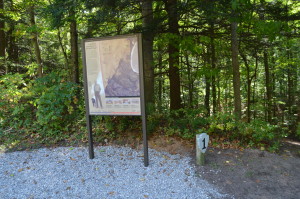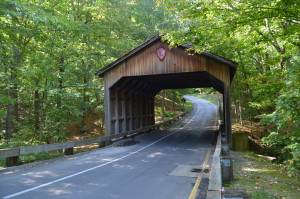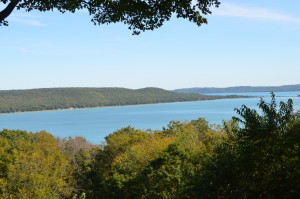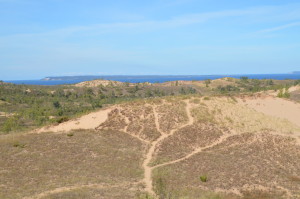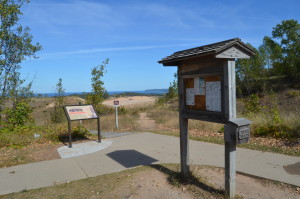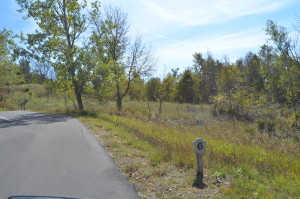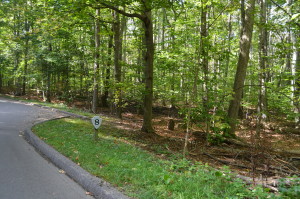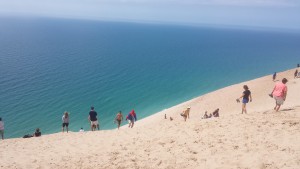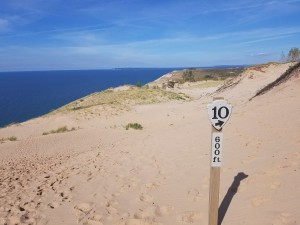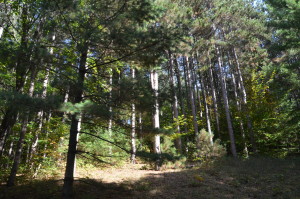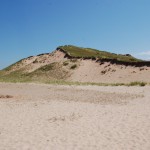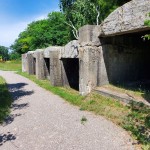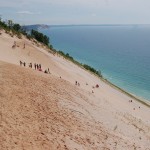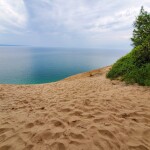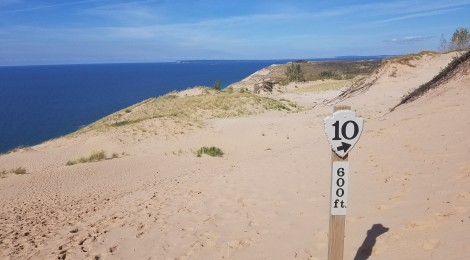
Pierce Stocking Scenic Drive: 12 Scenic Stops at Sleeping Bear Dunes National Lakeshore
Sleeping Bear Dunes National Lakeshore continues to be one of the most popular summer destinations for Michigan residents and visitors from all over the country. In previous posts we’ve looked at great hikes like Empire Bluff, Pyramid Point, and Sleeping Bear Point. Today we turn our attention to one of the most popular spots at the park – Pierce Stocking Scenic Drive. This seven-mile route is reached from M-109 between Glen Haven and Empire and it has 12 interpretive stops. You’ve no doubt seen a few pictures from the Lake Michigan Overlook, and while that remains one of our favorite stops its far from being the only highlight of this drive. (Sleeping Bear Dunes National Lakeshore charges visitors fees of $20 per vehicle for seven days or $40 for an annual pass)
1. Covered Bridge – This 13′ 6″ covered bridge is the first scenic stop on this drive, and one of the most popular for photographs (especially in fall). The original wood covering here was constructed to keep the elements off of the wooden bridge, as it was cheaper to replace the roof than to rebuild the bridge.
2. Glen Lake Overlook – From the viewing platform here visitors get a great view of the blue waters of Glen Lake, which appears as two separate lakes divided by M-22. Little Glen Lake is shallow (12 feet deep), while Big Glen Lake reaches depths around 130 feet. Shortly after the Glen Lake overlook you will reach Picnic Mountain, which is a great spot to stop for a meal or snack and a rest before reaching the dunes.
3. Dune Overlook – The third stop on this tour presents the first set of stunning views. From a platform on top of a sand dune that is roughly 200 feet tall, you can see Glen Lake, Lake Michigan, the Manitou Islands, Pyramid Point, Sleeping Bear Bay, the historic D.H. Day farm, and more. You’ll also be able to observe different aspects of dune ecology – sand ridges, stabilizing vegetation, blowouts and more. The park asks that you do not walk on the dunes here, wait for the next stop which has a trail.
4. Cottonwood Trail – This 1.5 mile somewhat strenuous trail provides “a close look at the beauty and diversity of the dunes.”
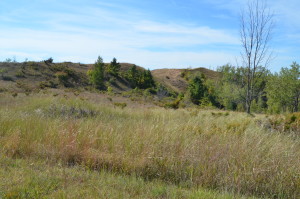
5. Dune Ecology – This stop encourages visitors to think about the incredibly harsh conditions dune plants have to battle with – wind, limited water retained, intense sun and heat, and sand build-up. Near this sign you will see cottonwood trees, and example of one tree that has adapted well to life among the dunes and is able to survive here.
6. Leaving the Sand Dunes – From this point the road heads into a beech-maple forest, moving away from the sand dunes. The dunes only extend about a mile inland from Lake Michigan, as they need the strong winds off the lake for their formation.
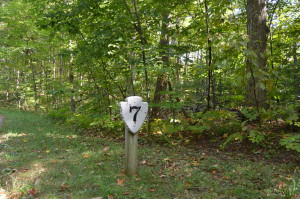
7. Beech-Maple Forest – After spending some time out in the sun, Pierce Stocking Scenic Drive now spends some time in the shade as it enters the forest. In addition to beech and maple, you will see black cherry, hemlock and basswood trees here. Plenty of vegetation can survive and thrive here because of the shade provided by the trees and you might catch a glimpse of local wildlife (squirrels, deer, chipmunks, etc.) in this section.
8. Changes Over Time – This station prompts visitors to consider what the landscape would have looked like here after glacial melting more than 11,000 years ago. “From this bleak beginning, plants, by their living and dying, have slowly created a layer of topsoil covering these sandy hills. Living communities of plants and animals have transformed this once-sterile ground into the productive forest that now surrounds you.”
9. Lake Michigan Overlook – Chances are you’ve seen a picture from this spot, as it is one of the most photographed locations in the state. This overlook offers one of the best views in Sleeping Bear Dunes National Lakeshore, as you stand at the top of a sand dune 450 feet above Lake Michigan. While there are no signs prohibiting a trek down the steep dune, there are warnings of how strenuous the trip back up can be and what the consequences are if a rescue effort has to be launched. Plan on spending a decent amount of time here, but be warned that parking can be hard to come by during peak tourist season.
10. Sleeping Bear Dune Overlook – From a vantage point near the Lake Michigan Overlook, you can see the dune that gives the park its name. Legend has it that a mother and her two cubs were swimming across Lake Michigan from Wisconsin to escape a fire. The mother bear made it while the cubs did not – the Manitou Islands represent the cubs and this hundred foot dune (once more than 230 feet tall) represents the mother bear. This perched dune is estimated to be two thousand years old, and it is one of the best examples in the park of what wind erosion can do over time.
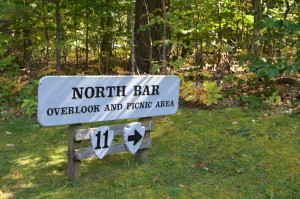
11. North Bar Lake Overlook – From this wonderful picnic area and overlook, you can see the point where North Bar Lake meets Lake Michigan. Depending on water levels a sandbar may separate the two or there may be a channel. This is often a preferred spot for swimming since the water is warmer and less rough than on Lake Michigan.
12. Pine Plantation – The pine trees on the side of the road here are all the same size and roughly the same age, a sign that they were all panted together before this land was part of the national lakeshore. “Pine trees serve a number of purposes: they prevent soil erosion, provide a windbreak, yield a timber crop and provide some wildlife habitat. Yet, for all their benefits, pine plantations are out of place in Sleeping Bear Dunes National Lakeshore. The park was set aside to preserve the natural environment. Therefore, native forest growth is more desirable here than pine plantations. In some parts of the park, portions of pine plantations have been cut selectively to encourage a mingling of natural growth among the pine trees.”

